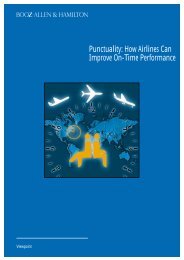The sentence
The sentence
The sentence
You also want an ePaper? Increase the reach of your titles
YUMPU automatically turns print PDFs into web optimized ePapers that Google loves.
3. We sometimes refer to ships, cars, motorbikes and other machines as she, when the<br />
reference is ‘affectionate’: My old car’s not fast, but she does 50 miles to the gallon.<br />
4. Some writers refer to a country as she when they’re thinking of it ‘as a person’:<br />
In 1941, America assumed her role as a world power.<br />
B. ‘One’<br />
‘One’ and ‘you’<br />
We use one, as a pronoun meaning ‘everyone/anyone’, to refer to ‘refer to ‘people in<br />
general’ only when we want to be formal. In everyday speech, we use you in an informal way to<br />
mean ‘everyone/anyone’. Compare:<br />
A: Is it easy to go camping in this country?<br />
B: Yes, but one isn’t allowed to camp where one likes. One can only use camp – sites.<br />
Or: Yes, but you aren’t allowed to camp where you like. You can only use camp – sites.<br />
Don’t use one, one’s (= your) and oneself (= yourself) unless you want to sound formals.<br />
‘One’ and ‘ones’ in place of countable nouns: ‘Use this clean one’<br />
1. We can’t use an adjective on its own in place of a singular countable noun. We must use a<br />
noun after an adjective or we must use one to avoid repeating the noun:<br />
Don’t use that cloth. Use this clean one. (Not *Use this clean.*)<br />
2. We use ones to avoid repeating a plural countable noun:<br />
I don’t want to wear my old shoes. I want to wear my news ones. (Not *wear my new*)<br />
3. We can use one and ones for people as well as things:<br />
Do you know John Smith/Jane Smith? – Is he/she the one who phoned last night?<br />
Do you know the Smiths? -Are they the ones who used to live in this house?<br />
4. We do not use one in place of and uncountable noun. We repeat the noun or use no noun<br />
at all:<br />
Don’t use that milk. Use this fresh milk. Or: Use this fresh. (Not *this fresh one*)<br />
‘Which one(s)? – ‘This/that (one)’, etc.<br />
1. We use one/ones to refer to people and thing after which? , this/that and adjectives:<br />
Which one would you like? This one or that one? – I’d like the large one/the red one<br />
We can also say Which would you like? This or that?<br />
2. We sometime omit one and ones after superlatives and in short answers:<br />
Which one/ones would you like? – I’d like the best (one/ones).<br />
Which one/ones would you like? – <strong>The</strong> large/the red.<br />
3. We usually avoid ones after these/those: I want these. I want those. (Not *these ones*)<br />
4. We normally use one/ones after this/that/these/those + adjective:<br />
I want this/that white one. I want these/those white ones.<br />
5. We cannot omit one/ones in structures like: Which woman? – <strong>The</strong> one in the green dress.<br />
24




